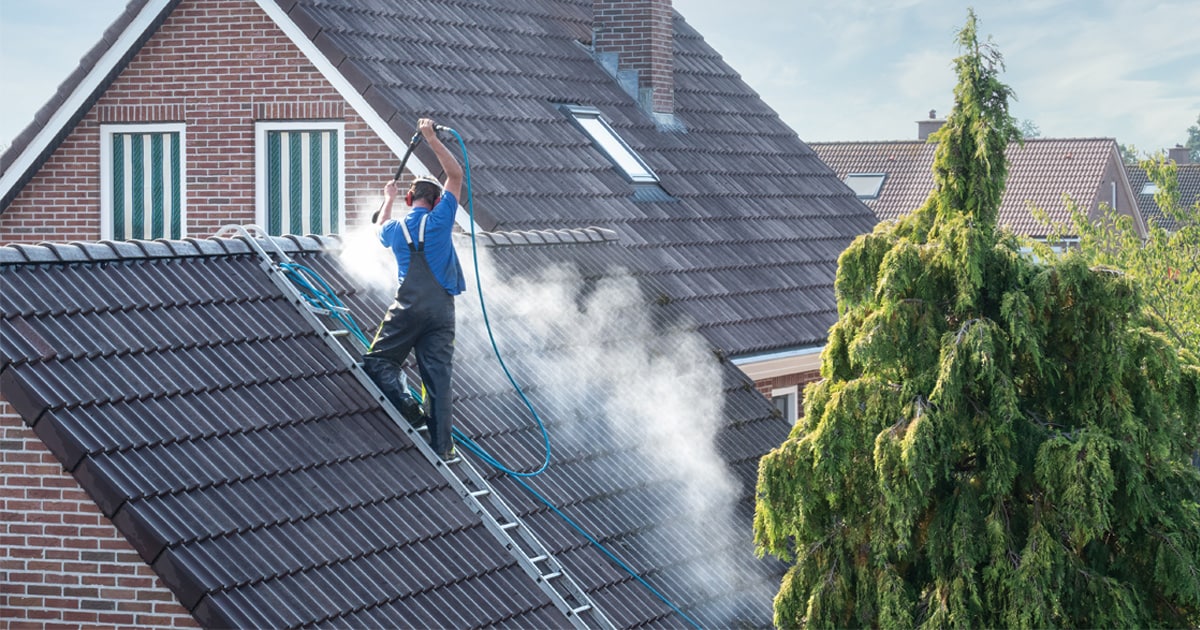Image Source: Google
- Pressure cleaning, also known as power washing, is a highly effective way to clean various surfaces around your home.
- It uses high-pressure water spray to remove dirt, grime, mold, and other stubborn stains from surfaces like driveways, decks, fences, and more.
- With the right techniques and equipment, pressure cleaning can leave your home looking spotless and well-maintained. You can navigate to Paint A Roof to get more details about the pressure cleaning.
Benefits of Pressure Cleaning
- Efficiently removes dirt and grime
- Prevents mold and mildew growth
- Restores the appearance of surfaces
- Increases the curb appeal of your home
- Helps maintain the value of your property
Essential Equipment for Pressure Cleaning
- Pressure washer: Choose a pressure washer with the right PSI (pounds per square inch) for the surfaces you'll be cleaning.
- Nozzles: Different nozzles produce different spray patterns, from wide fan patterns for general cleaning to narrow streams for tough stains.
- Hoses: High-quality hoses are essential for reaching all areas that need to be cleaned.
- Detergent: Some surfaces may require specialized detergents to effectively remove dirt and grime.
- Safety gear: Always wear safety goggles and gloves when operating a pressure washer to protect yourself from debris and chemicals.
Tips and Tricks for Effective Pressure Cleaning
- Start with a thorough inspection of the area to be cleaned to identify any potential hazards or delicate surfaces.
- Prep the area by removing any obstacles, covering plants and electrical outlets, and applying detergent if needed.
- Test the pressure washer on a small, inconspicuous area to ensure the pressure is appropriate for the surface.
- Work in sections, using sweeping motions and overlapping strokes to ensure even cleaning.
- Keep the nozzle at a consistent distance from the surface to avoid damage or streaking.
- Rinse the area thoroughly after cleaning to remove any remaining detergent or debris.
- Allow the surface to dry completely before inspecting the results and making any necessary touch-ups.
Safety Precautions for Pressure Cleaning
- Avoid pointing the pressure washer at yourself or others, as the high-pressure spray can cause serious injury.
- Never operate a pressure washer from a ladder or other unstable surface to prevent falls and accidents.
- Use caution when working on elevated surfaces to prevent slipping and falling.
- Do not use a pressure washer near electrical outlets or wiring to avoid the risk of electric shock.
- Wear appropriate safety gear, including goggles, gloves, and closed-toe shoes, to protect yourself from debris and chemicals.
Common Pressure Cleaning Mistakes to Avoid
- Using too high pressure for delicate surfaces, which can cause damage.
- Neglecting to test the pressure washer on a small area before starting the cleaning process.
- Overlooking safety precautions, such as wearing proper safety gear and avoiding electrical hazards.
- Skipping the pre-cleaning steps, such as removing obstacles and applying detergent, which can affect the quality of the cleaning.
- Leaving detergent residue on the surface, which can attract dirt and grime, leading to quicker re-contamination.
Conclusion
- Pressure cleaning is a powerful tool for maintaining a spotless home and increasing curb appeal.
- By following the tips and tricks outlined in this guide, you can achieve professional-quality results with your pressure cleaning efforts.
- Remember to prioritize safety, use the right equipment, and avoid common mistakes to make the most of your pressure cleaning experience.
- With a little practice and attention to detail, you can enjoy a cleaner, fresher home that looks as good as new.

